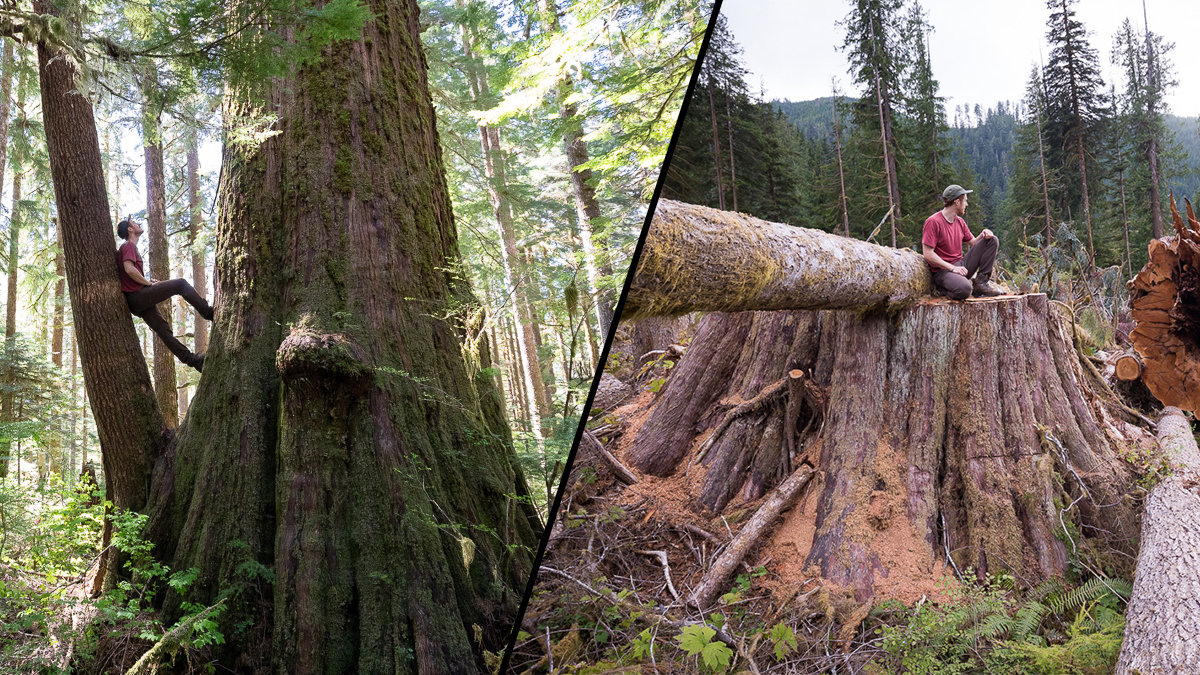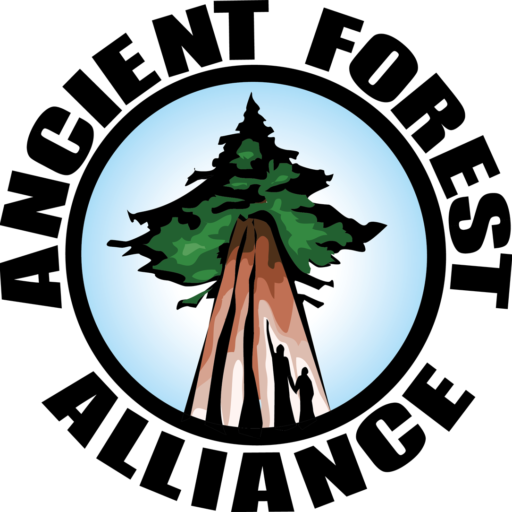From old-growth forests to grasslands, rainforests to dry forests, alpine mountaintops to rich valley bottoms – British Columbia (BC) has the greatest diversity of ecosystems in Canada. This brings with it the responsibility and opportunity for the province to ensure the protection of these globally renowned ecosystems for our health and well-being, to support a more sustainable, diversified economy, to support First Nations cultures, and to avert the extinction and climate crises.
We commend the progress thus far that has been made by the BC NDP government, including their commitment to protect 30% of BC by 2030, securing over $1 billion in provincial-federal conservation financing, deferring logging on 1.2 million hectares of the TAP’s most at-risk old-growth, and starting parts of the value-added, second-growth and engineered wood products transition. However, critical policy gaps still remain.
Below, we’ve outlined our detailed policy recommendations to ensure BC takes effective action to protect its remaining old-growth forests.
1. Develop a BC Protected Areas Strategy to Protect Priority Ecosystems via Shared Decision-Making with First Nations
In BC, protection is skewed toward alpine and marginal timber to minimize the impacts on the available timber supply (i.e. “save the small trees, log the big trees”). If the BC government is serious about preventing a flare-up of the War in the Woods again, it must develop a provincial Protected Areas Strategy (PAS) to proactively pursue the protection of the most endangered, least-represented ecosystems, including the big-treed old-growth stands.
Currently, the government is waiting for First Nations to approach them with Indigenous Protected and Conserved Area (IPCA) proposals. However, the reality is that many First Nations communities lack the capacity, technical insights (in part due to a lack of a proactive information flow from the BC government), and economic ability (without alternative financial support to protect the big-tree old-growth forests in their territories, particularly during the deferral phase) to do so. A systematic and proactive approach towards creating protected areas from the province is indispensable to get the job done; otherwise, protection will be “aspirational” and come short of protecting the most endangered and least represented ecosystems.
A provincial Protected Areas Strategy (PAS), such as that of the BC NDP government in the 1990s, is vital for proactively identifying candidate areas for potential protection. This strategy would be guided by Ecosystem-Based Protection Targets, include plans and budgets, and be contingent on proactively engaging and undertaking shared decision-making with local First Nations. The PAS should also guide the expenditure of the $1 billion in conservation financing funds from the BC Nature Agreement, based on these objectives.
The NDP-Green governing agreement has set a precedent for this approach by requiring the province to engage with the Pacheedaht First Nation to discuss the potential protection of Fairy Creek. However, such an approach is needed across the province to protect other priority areas.
2. Develop the “GPS of Protection” – Ecosystem-Based Targets – from the Biodiversity and Ecosystem Health Framework
BC needs “Ecosystem-Based Targets” to safeguard the full range of diverse ecosystems and ensure the most threatened ecosystems are not left behind.
BC’s goal to protect 30% of land by 2030 is a positive leap forward, but protection is about quality, not just quantity. To safeguard biodiversity, we need legally-binding protection targets for every ecosystem type on a scale large enough to ensure their long-term health and stability.
Developed by independent science panels and First Nations Traditional Ecological Knowledge committees, these targets would ensure that protection is guided by science, not convenience, and direct conservation funding where it’s needed most. A science-based approach is needed that ensures protection targets for all ecosystems that are “fine filter” enough to include forest productivity distinctions to distinguish between sites with small versus big trees.
These Ecosystem-Based Targets must not be limited to guiding the establishment of conservation reserves, like Old-Growth Management Areas and Wildlife Habitat Areas, but must also guide the establishment of much larger Provincial Parks and Provincial Conservancies with stronger protection standards.
The BC government’s draft Biodiversity and Ecosystem Health (BEH) Framework is our best opportunity to ensure smart forest protection.
3. Secure Remaining Old-Growth Deferrals in All Most At-Risk Stands by Providing “Solutions Space” Funding
To date, only about half (~1.2 million hectares) of the most at-risk old-growth stands with the biggest and oldest trees identified by the Technical Advisory Panel (TAP) have been deferred from logging out of 2.6 million hectares. Another 1.2 million hectares of more marginal stands have also been deferred.
The “War in the Woods” primarily hinges on the remaining 1.4 million hectares of undeferred most at-risk old-growth stands. To secure these areas, deferral or “solutions space” funding for First Nations is needed to compensate for their lost forestry revenues in deferral areas – otherwise, it’s asking First Nations to go years without what is often their largest revenue source.
BC Nature Agreement Funds are a potential source and can be applied going forward for new deferrals (i.e. the other 1.3 million+ hectares) and extensions of existing deferrals.
4. Close Logging Loopholes in Conservation Reserves (e.g. OGMAs and WHAs)
Currently, Old Growth Management Areas (OGMAs) can be moved and swapped for lower-value timber, while many Wildlife Habitat Areas (WHAs) still allow commercial logging within their boundaries (including in some spotted owl, northern goshawk and mountain caribou reserves and buffers). OGMAs should not be moveable for logging interests (wildfires and natural disturbances are different), and logging should not occur in the WHAs of sensitive old-growth species.
Until then, these areas must not be included in BC’s accounting towards its 30% by 2030 goal (i.e. BC has not protected 19.5% but rather 15 to 16%).
The BC government also needs to proactively work with First Nations towards ensuring legally-binding surrogate protections (Indigenous Protected and Conserved Areas or IPCAs) that uphold the minimum protection standards (i.e. no logging, mining, or oil and gas development) of former parks and protected areas when they are affected by treaty and land title settlements.
The government must also ensure that rigorous protection standards are in place for existing parks and conservancies and any future IPCA designation moving forward that prohibit commercial logging, mining, and oil and gas development, as is currently the case, while protecting the rights of First Nations to hunt, fish, forage, and harvest individual trees for cultural purposes (such as for dugout canoes, longhouses, totem poles, etc.).
5. Ensure The Integrity of Misidentified Deferral Areas
There is an urgent need for the BC government to proactively identify what are likely thousands of hectares of at-risk old-growth forests that were missed during the deferral process due to forest inventory errors.
After the priority deferral areas were identified and mapped, the TAP specifically mentioned the issue of inventory errors in its report, making clear recommendations to the BC government that on-the-ground assessments should be used to identify and defer big-tree old-growth forests that were missed in its preliminary analysis.
Thus far, the BC government has only used field verification to remove deferral areas that don’t meet the TAP criteria (which are then supposed to be replaced with those that do, when possible) in order to facilitate logging. They have not allowed the addition of any incorrectly identified at-risk old-growth stands to deferral areas — a blatant and outrageous bias toward the old-growth logging industry.
The inability to add misidentified at-risk old-growth stands to priority logging deferral areas constitutes one of the major gaps in the BC government’s old-growth policy as it moves forward to overhaul the conservation and management of these iconic forests. The BC government must ensure the addition of these forests for deferral where identified by scientists, citizens, and industry.
6. Build a Modernized, Smart Forest Industry and a BC Conservation Economy Strategy
The BC government should expand a major second-growth, value-added “smart forest industry” incentive program, where log export “fees in lieu” rebates, PST relief, and provincial property tax relief can be used as incentives to significantly scale up the transition to smaller-diameter, value-added, second-growth engineered wood products. Log export restrictions should also be undertaken, along with a concerted effort to facilitate eco-forestry practices to create higher-value logs (longer rotations, removing lower limbs) and commercial thinning.
A BC Conservation Economy Strategy is also needed, particularly in regions where the major expansion of protected areas is occurring. This will ensure that the expansion of protected areas more quickly aligns with the expansion of a diversified and sustainable economy in the affected communities, benefiting the province as a whole. Provincially-supported business development hubs can provide rebates, loans and various financial incentives; in-kind business development support; facilitation of labour services, including supporting staff housing and accommodation (e.g. supporting rental zoning bylaw adjustments); and other strategies to spur tourism, recreation, real estate, high-tech, non-timber forest products, carbon-offset and clean tech development.
Such a strategy can make BC a powerhouse to fuel a sustainable economic resurgence, while also protecting old-growth and endangered ecosystems.
A Moment for Bold Leadership
BC has an opportunity to become a leader in conservation and sustainable second-growth forestry. Without these reforms, we risk escalating conflict over old-growth logging, continued biodiversity loss, and further instability in forestry-dependent communities. By closing these policy gaps, we can ensure a truly sustainable future for the forests, people, and economy of BC.


